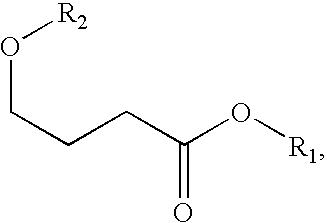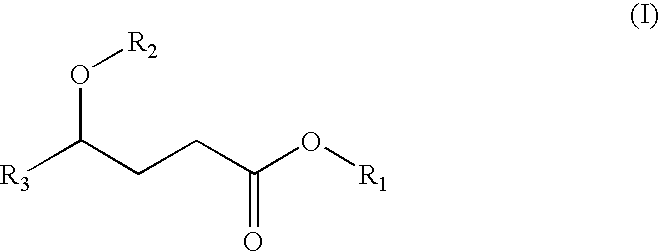Methods and Compositions for Treating Arg
a technology of arg and composition, applied in the direction of drug compositions, biocide, heterocyclic compound active ingredients, etc., can solve the problems of ghb having ghb seizures and coma, and 1,4-butanediol has risks beyond unintended disinhibition
- Summary
- Abstract
- Description
- Claims
- Application Information
AI Technical Summary
Benefits of technology
Problems solved by technology
Method used
Image
Examples
example 1
[0289]The composition of the invention can be prepared by dissolving sodium gamma-hydroxybutyrate 4.235 grams into 150 ml water. 100 mg methyl paraben, 30 mg propyl paraben, a flavoring agent, and a coloring agent, and enough water to generate a total volume of 235 ml are then added. This affords a concentration of 18 mg of sodium gamma-hydroxybutyrate / ml of solution.
example 2
[0290]The composition of the invention can be prepared by dissolving sodium gamma-hydroxybutyrate 4.235 grams into 150 ml water. 40 mg methyl paraben, 12 mg propyl paraben, a flavoring agent, and a coloring agent, and enough water to generate a total volume of 235 ml are then added. This affords a concentration of 18 mg of sodium gamma-hydroxybutyrate / ml of solution.
example 3
[0291]The composition of the invention can be prepared using sodium gamma-hydroxybutyrate 4.235 grams, 168 mg methyl paraben, 50 mg propyl paraben, a flavoring agent, a coloring agent, and enough water to generate a total volume of 235 ml.
PUM
| Property | Measurement | Unit |
|---|---|---|
| half life | aaaaa | aaaaa |
| concentration | aaaaa | aaaaa |
| concentration | aaaaa | aaaaa |
Abstract
Description
Claims
Application Information
 Login to View More
Login to View More - R&D
- Intellectual Property
- Life Sciences
- Materials
- Tech Scout
- Unparalleled Data Quality
- Higher Quality Content
- 60% Fewer Hallucinations
Browse by: Latest US Patents, China's latest patents, Technical Efficacy Thesaurus, Application Domain, Technology Topic, Popular Technical Reports.
© 2025 PatSnap. All rights reserved.Legal|Privacy policy|Modern Slavery Act Transparency Statement|Sitemap|About US| Contact US: help@patsnap.com



